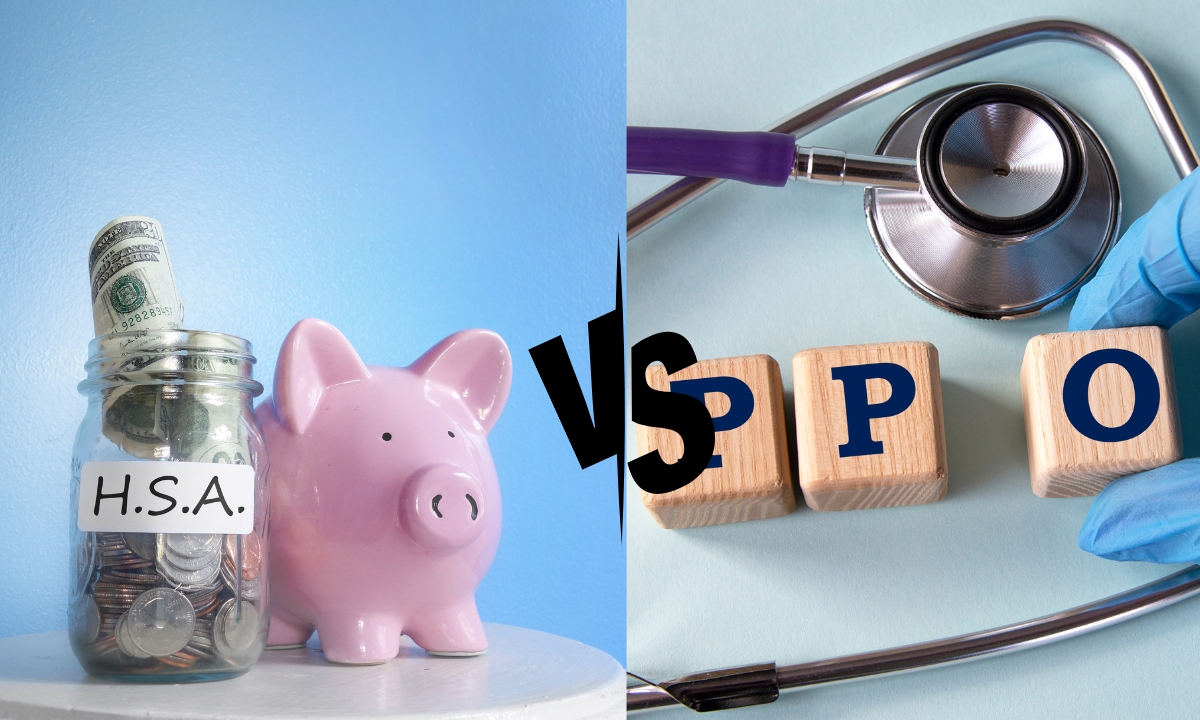Health Insurance
Small Business Health Insurance Costs
Understanding the costs associated with small business health insurance is vital for any entrepreneur or small business owner. Health insurance is not just an attractive benefit that attracts and retains top talent, it also plays an integral role in the overall well-being and satisfaction of your employees.
But the reality is stark: about half of small businesses find it challenging to afford traditional benefits, leading to a competitive disadvantage when it comes to talent acquisition and retention.Interestingly, 90% of our clients are introducing benefits for the first time. This underscores the rapidly changing landscape as businesses recognize the value of offering health benefits to remain competitive.
Large corporations benefit from scale in negotiating premiums, while small businesses face distinct challenges with small business helath insurance costs. Health Reimbursement Arrangements (HRAs) offer an affordable solution, enabling businesses to attract top talent without straining finances.
Small Business Health Insurance Costs vs Large Employers
According to the Kaiser Family Foundation’s 2023 annual survey, the average annual premiums for employer-sponsored health insurance reached $23,968 for family coverage, showing a steady rate compared to the previous year. Despite the stable premium rate, workers saw their wages increase by 5.2% and inflation by 5.8%, suggesting that future premiums might see a rise given the ongoing inflationary trends.
The distribution of these costs differs between small businesses and larger employers:
- Small Businesses: Businesses with fewer than 50 employees typically face higher premiums due to limited negotiating power and concentrated administrative costs.
- Large Employers: Their size allows them to negotiate better rates, handle administrative tasks efficiently, and possibly self-insure for further savings.
Related: How Rising Inflation Affects Health Insurance Costs
What Health Insurance Options Are Available for Small Business Owners?
For small business owners, understanding the range of health insurance options is imperative. Here’s a breakdown of the various available choices:
- SHOP (Small Business Health Options Program): A health insurance marketplace for small businesses, SHOP lets employers select coverage levels and decide how much to contribute to employee premiums.
- Level Funded Plans: These are a middle-ground solution between fully-insured and self-funded plans. Employers pay a set monthly fee, and if claims are below a certain amount by year’s end, they may receive a refund.
- Self-Funded Plans: Here, instead of paying premiums to an insurance provider, employers set aside funds to cover potential claims. This option can save money but does come with higher risk.
- Traditional Employer Sponsored Group Plans: This is the most common health insurance option, where employers offer standardized group plans to employees. Premiums are typically shared between employers and employees.
- Sharing Ministries: This is a faith-based approach where members share medical expenses. It’s not insurance per se, but members can benefit from reduced medical costs.
- Stipends: Some employers provide a fixed monetary amount to employees to buy their own insurance, giving them the flexibility to choose.
- No Benefits: Given certain conditions, smaller businesses might not be legally obligated to offer health insurance. They might opt not to provide any benefits.
- HRAs (Health Reimbursement Arrangements): These are employer-funded accounts that reimburse employees for out-of-pocket medical expenses and individual health insurance premiums.
What Costs Does the Employer Take on With a Small Group Health Insurance Plan?
Here’s a detailed breakdown to understand the costs associated with small group health insurance plans:
Small Group Health Insurance Premium Costs
This is the monthly fee paid to the insurance provider. While employers often cover a significant portion, employees may also contribute.
Small Business Health Insurance Copays
A fixed amount that employees pay for health services after their insurance takes effect. It varies based on the service type and plan.
Small Business Health Insurance Out-of-Pocket Costs
These are expenses not covered by insurance. They can include deductibles, copayments, and coinsurance.
Small Business Health Insurance Out-of-Pocket Maximums
This is the maximum amount employees pay during a policy period (typically a year). After reaching this amount, the plan covers 100% of the allowed amount of covered services.
In Network and Out-of-Network
In-network providers have negotiated rates with the insurance company. Using them is generally cheaper. Out-of-Network providers haven’t, and using them can result in higher out-of-pocket costs for employees.
By understanding these options and costs, small business owners can make informed decisions that align with their financial capabilities and cater to their employees’ needs.
Determining the Cost of Your Business’s Health Insurance
Determining your business’s health insurance cost involves various factors like workforce size and health needs, and desired coverage. However, these guidelines can simplify the decision-making process.
Look at Average Costs for Your Area
Regional variations affect health insurance costs. Urban areas may have higher premiums due to increased living and healthcare costs, while rural regions might have fewer providers, altering pricing dynamics.
- Research Local Averages: Begin by investigating the average costs of health insurance plans in your region. Local chambers of commerce, industry associations, or state insurance departments can provide valuable data.
- Consult Brokers: Insurance brokers familiar with your area can give insights into the pricing trends and help identify cost-effective plans tailored to your needs.
Set Limits Based on Yearly Revenue
Tying health insurance expenses to your company’s yearly revenue can ensure that you provide robust benefits without jeopardizing financial health.
- Determine a Percentage: Decide on a specific percentage of your revenue that you’re willing to allocate to health insurance. This ensures your expenses grow proportionally with your company’s success.
- Regularly Review: As your revenue changes – whether it increases or decreases – revisit your health insurance spending. Adjust your coverage or contribution rates to maintain a balanced budget.
Stick to 10% of Employee Income
Many businesses aim to keep an employee’s health insurance contribution under 10% of their income, making it affordable and reducing turnover from financial pressures.
- Calculate Average Employee Income: Determine the average income of your employees. Then, set the maximum employee contribution for health insurance at 10% of this average.
- Offer Sliding Scales: For businesses with a wide range of salaries, consider a sliding scale where higher earners might pay a slightly larger percentage, ensuring that lower earners can still afford their coverage.
What Factors Influence the Cost of Small Business Health Insurance?
Health insurance costs for small businesses differ due to various factors. Recognizing these can help owners choose a financially feasible plan. Here are the primary influencing factors:
- Size of the Workforce: Employee count affects costs. While more employees can raise total premiums, the cost per employee may decrease due to economies of scale.
- Age of Employees: Typically, older employees have higher insurance costs than younger ones, so the age makeup of your workforce can influence overall premiums.
- Location: As mentioned earlier, the geographical area where your business operates can influence costs. Some regions might have higher medical costs, affecting insurance premiums.
- Type of Plan: There are various health insurance plans available, from HMOs and PPOs to high-deductible plans and more. The chosen plan type will significantly impact costs.
- Coverage Options: The breadth and depth of coverage you opt for will determine the price. Plans that cover more medical services or offer lower deductibles and copayments are generally more expensive.
- Employee Contribution: The portion of the premium employees pay affects the company’s cost. While a higher employee contribution eases the company’s expense, it may affect employee contentment.
- Network Restrictions: Plans with limited provider networks are often cheaper but may restrict where employees can receive care without additional costs.
- Wellness Programs: Some insurers offer discounts or incentives for businesses that implement wellness programs, aiming to improve the overall health of employees and reduce claims.
- Claim History: If your employees have a history of making numerous or large claims, your premiums may be higher. Conversely, fewer claims might lead to lower premiums.
- Industry Type: Businesses in industries with higher health risks might face higher insurance costs. For instance, construction companies might pay more than a tech startup due to the inherent job risks.
- Duration of the Policy: The length of the insurance contract can also play a role. Long-term contracts might offer stable premiums, while short-term ones could be subject to yearly adjustments.
Keep Small Business Insurance Costs Down
Offering health insurance can attract talent for small businesses but can be costly. Here are strategies to manage these expenses:
- Evaluate Plan Designs: Consider high deductible health plans which often have lower premiums. These can be paired with Health Savings Accounts (HSAs) to help employees offset out-of-pocket expenses.
- Shop Around: Don’t settle for the first quote. Compare multiple providers to find competitive rates and the best value for your business.
- Wellness Programs: Promote employee health and well-being. Insurers often provide discounts for businesses that implement programs like smoking cessation or fitness challenges.
- Consider Level Funding: This approach allows small businesses to benefit from the cost-saving aspects of self-insurance while having a fixed monthly premium.
- Employee Contributions: Adjust the percentage employees contribute to their premiums. Ensure it’s a balance between company savings and employee affordability.
- Group Size and Composition: Combining with other small businesses to buy insurance can sometimes reduce costs by increasing the size of the insured pool.
- Annual Review: Regularly review your plan to make sure it aligns with your business goals and employee needs.
HRA Types for Small Businesses
Health Reimbursement Arrangements (HRAs) are a flexible way for small businesses to offer health benefits without traditional health insurance. There are different types of HRAs suitable for various needs:
- Qualified Small Employer Health Reimbursement Arrangement (QSEHRA): For businesses with fewer than 50 employees. It allows employers to reimburse employees tax-free for individual health insurance and medical expenses.
- Individual Coverage Health Reimbursement Arrangement (ICHRA): It offers flexibility by allowing employers of any size to reimburse employees for individual health insurance policies.
- Group Coverage HRA: Businesses with traditional group health insurance can use this to help employees with out-of-pocket costs.
- Retiree HRA: For retired employees, offering tax-free reimbursements for medical expenses.
Controlling Benefit Costs With QSEHRA and ICHRA
Both QSEHRA and ICHRA offer small businesses an alternative to traditional group health insurance. Here’s how they can control costs:
- Budget Control: Employers set the reimbursement amount, ensuring predictability in health benefits spending.
- Flexibility: Employers can offer different allowances based on employee classes, catering to diverse workforce needs without a one-size-fits-all approach.
- Tax Advantages: Reimbursements through QSEHRA and ICHRA are tax-free, reducing the overall tax burden for both employers and employees.
- Elimination of Administrative Burden: Without the need to manage a traditional group policy, businesses can reduce administrative complexities and costs.
- Customization: Employees choose the insurance that best fits their needs, ensuring they get the best value for their health care, which can lead to cost savings.
- Market Competition: As employees shop for their policies, insurance providers are incentivized to offer competitive pricing.
Leveraging HRAs like QSEHRA and ICHRA allows small businesses to provide valuable health benefits to employees while maintaining cost control and flexibility.
Their size allows them to negotiate better rates, handle administrative tasks efficiently, and possibly self-insure for further savings.
[Read our health insurance market snapshot report.]
Get Started with HRAs Today
In the evolving landscape of health benefits, it’s crucial for businesses, especially small ones, to stay ahead of the curve. HRAs offer a flexible, cost-effective solution tailored to meet the unique needs of every business. Don’t navigate this journey alone. Contact Take Command today and let us help you set up the perfect HRA for your business’s success. Your employees deserve the best, and we’re here to ensure they get it.
Related Posts
- EVALUATING THE COSTS AND COVERAGE OF BUSINESS HEALTH INSURANCE
Small enterprise homeowners and their workers can profit from high quality and inexpensive group well…
- THE IMPORTANCE OF MENTAL HEALTH COVERAGE IN SMALL BUSINESS HEALTH INSURANCE
It’s essential to needless to say providing small enterprise medical health insurance is elective for…
- Best small business health insurance for your company
Some traits of the most effective small enterprise medical health insurance corporations embody good customer…


















